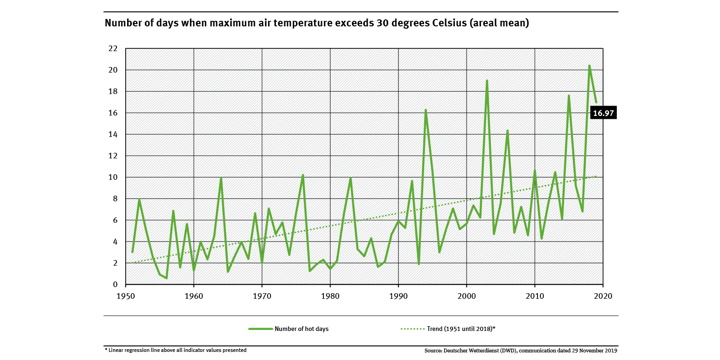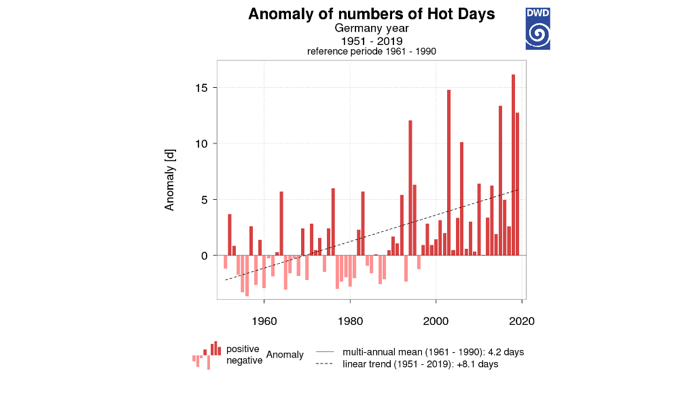Days with temperatures > 30°C are called hot days (earlier term: tropical days). The number of hot days is a term describing the quality of a summer. Temperatures >30°C have negative effects on the development of most crops, especially during dry periods. The higher the humidity, the greater the impact on humans and animals.
At a glance
- The highest number of hot days averaged across Germany were recorded in 2003, 2015 and 2018.
- Despite considerable fluctuations between individual years, the overall trend is rising significantly.
- More hot days are expected during the summer months in the coming decades due to climate change.
Environmental importance
Rising temperatures can adversely affect human health. Germany's National Meterological Service, the “Deutscher Wetterdienst” (DWD), defines ‘hot days’ as any day at which the maximum temperature exceeds 30 degrees Celsius (°C). High air temperatures have a direct impact on the human body, as the heat can cause circulatory problems. Indirectly, hot weather can raise pollutant levels in the air we breathe, leading to an increase in respiratory and circulatory diseases. High air temperatures combined with intense sunlight promote the formation of ground-level ozone. Ozone irritates the eyes and airways and can exacerbate existing respiratory diseases. It can also trigger allergic reactions.

https://www.umweltbundesamt.de/en/indicator-hot-days#environmental-importance

https://www.dwd.de/EN/ourservices/zeitreihen/zeitreihen.html
(If you select Year in the period under consideration, you can select hot days in "Element" and Absolute in "Type")
https://www.umweltbundesamt.de/daten/klima/trends-der-lufttemperatur#textpart-3